Abstract
1. Guanidine hydrochloride (CH5N3-HCl) was applied to frog neuromuscular junctions blocked by reduced external Ca2+, or increased external Mg2+ concentration, or by both. Guanidine produced a dose-dependent increase in the average number of quanta released by presynaptic action potentials, the threshold dose being 0-1-0-2 mM. No post-synaptic effects were observed. 2. Guanidine also increased the excitability of the motor nerve fibres, as evidenced by multiple firing to single electrical stimuli and finally by spontaneous action potentials. These effects were studied in greater detail in giant axons (Müller axons) in the spinal cord of lamprey. Exposure to guanidine produced in these axons a progressive increase in excitability, manifested by repetitive firing to a single electrical stimulus, spontaneous membrane potential oscillations and spontaneous bursts of action potentials. Guanidine had no effect on the resting potential. 3. The effect of guanidine on the excitability of Müller axons was mimicked in every detail simply by reducing the divalent cation concentration of the bathing solution. 4. Guanidine also produced dose-dependent increases in the duration of action potentials in Müller axons. This effect always preceded in time the appearance of the excitability effects and was not mimicked by reducing the divalent cation concentration. It is suggested that the broadening of the action potential is separate from the excitability effects and may reflect a decrease of delayed rectification. 5. Guanidine (0-3 mM) increased the frequency of miniature end-plate potentials (min. e.p.p.) in solutions containing 2-11 mM-K+ in such a way as to shift the relationship between min. e.p.p. frequency and extracellular K+ toward lower values of K+. This effect was interpreted to mean that guanidine produced a depolarization of the nerve terminal which summed with the depolarization produced by a given concentration of K+. The calculated depolarization produced by 0-3 mM guanidine was 5-7 mV. 6. The effects of guanidine on evoked transmitter release, excitability, and min. e.p.p. frequency are consistent with a hypothesis which states that guanidine binds at or near fixed negative changes on the outside of nerve membrane and reduces the screening effect of divalent cations.
Full text
PDF
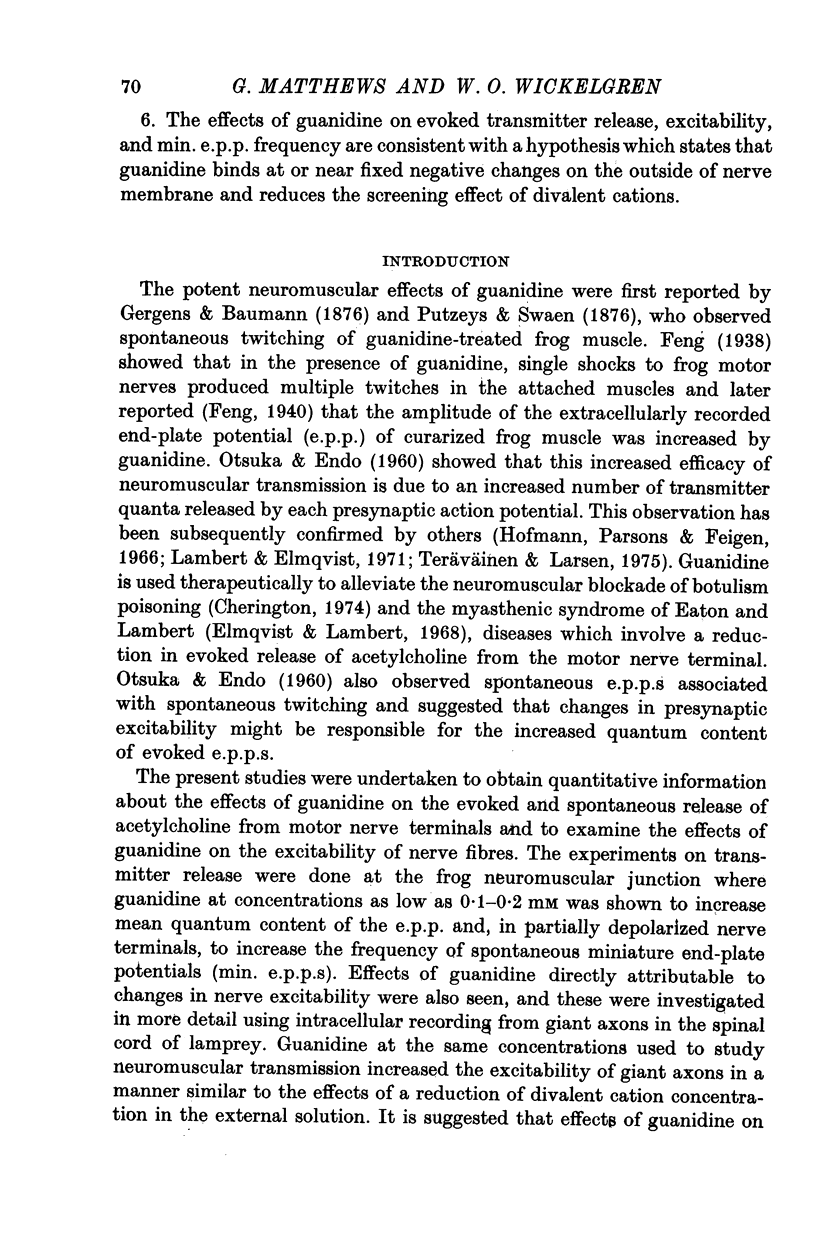
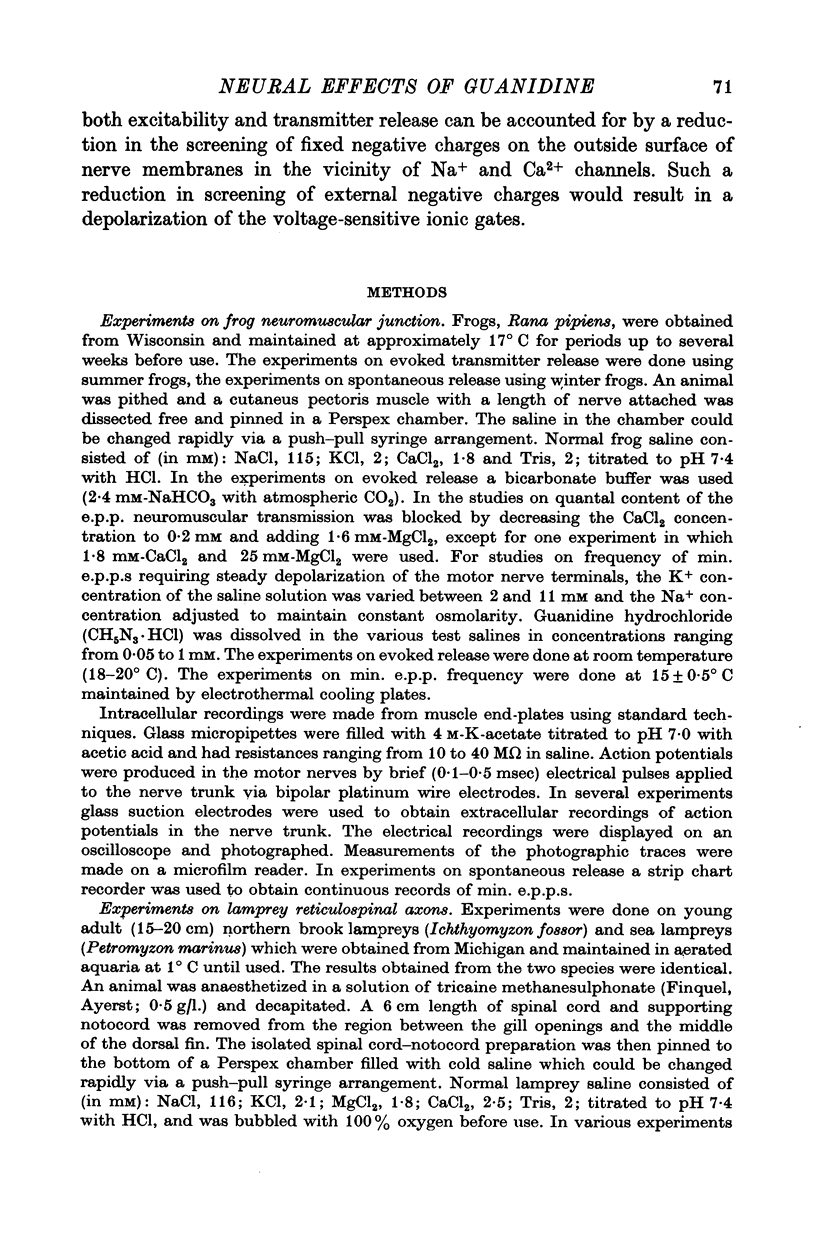



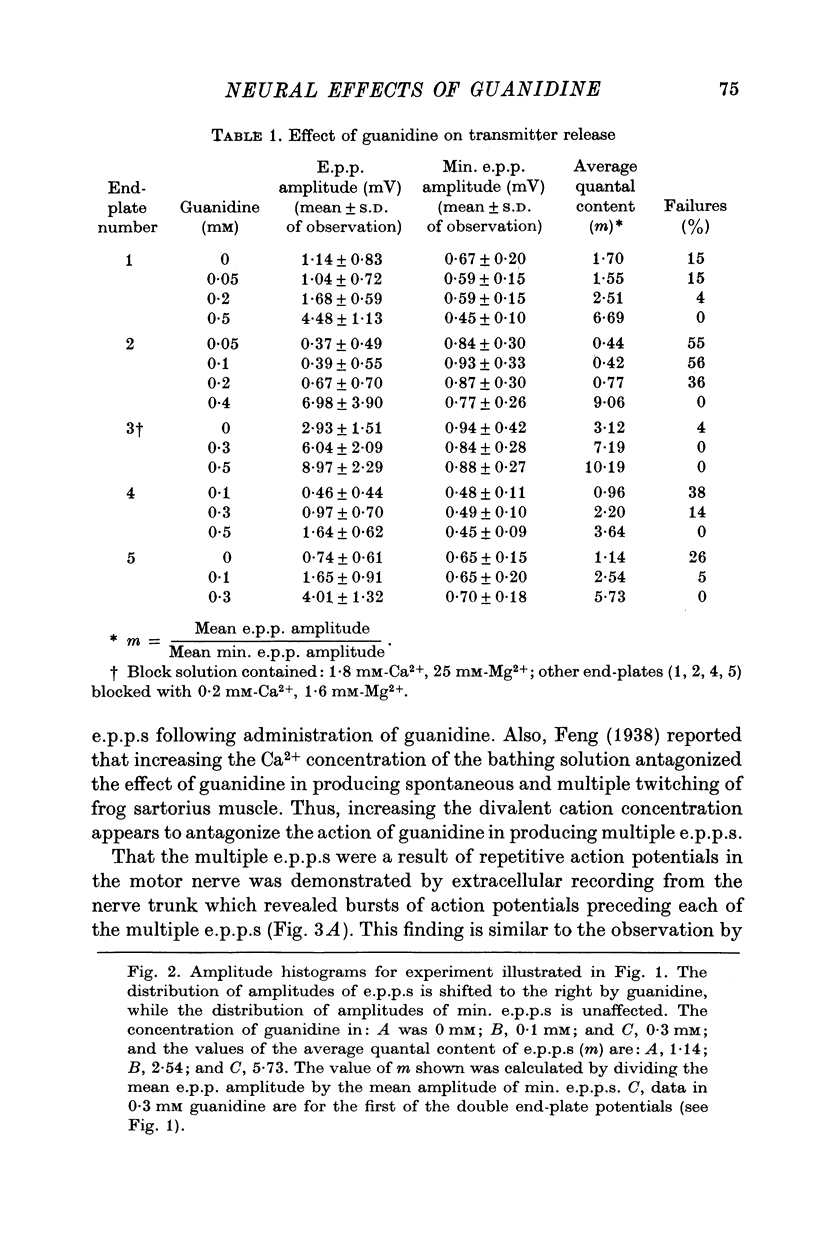
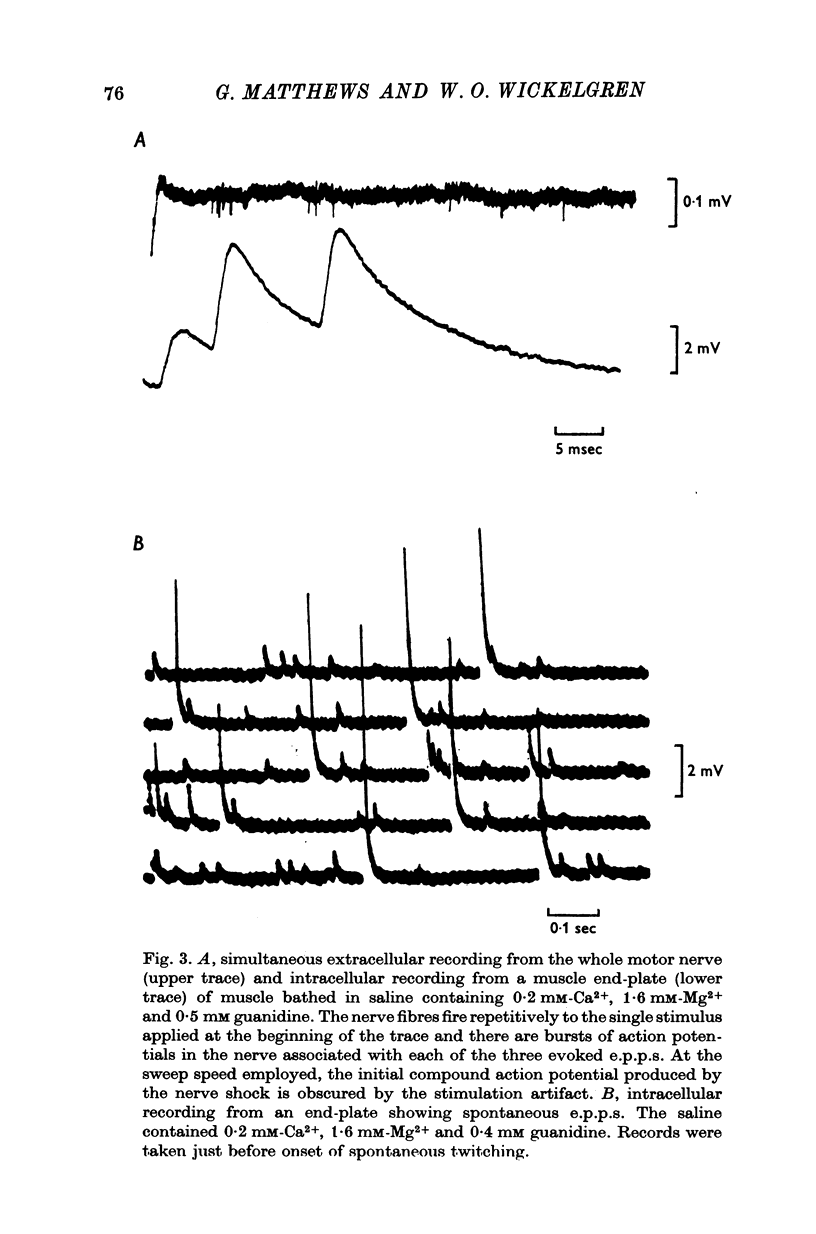


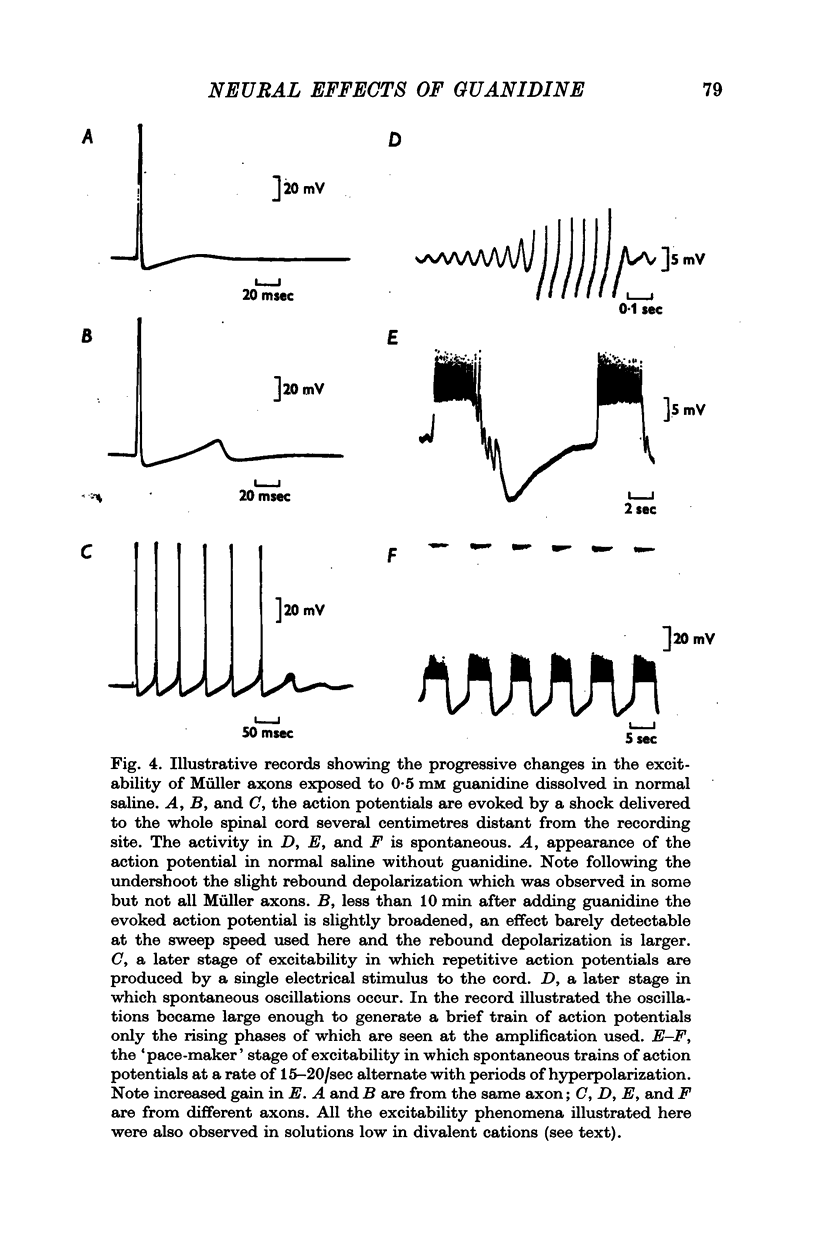




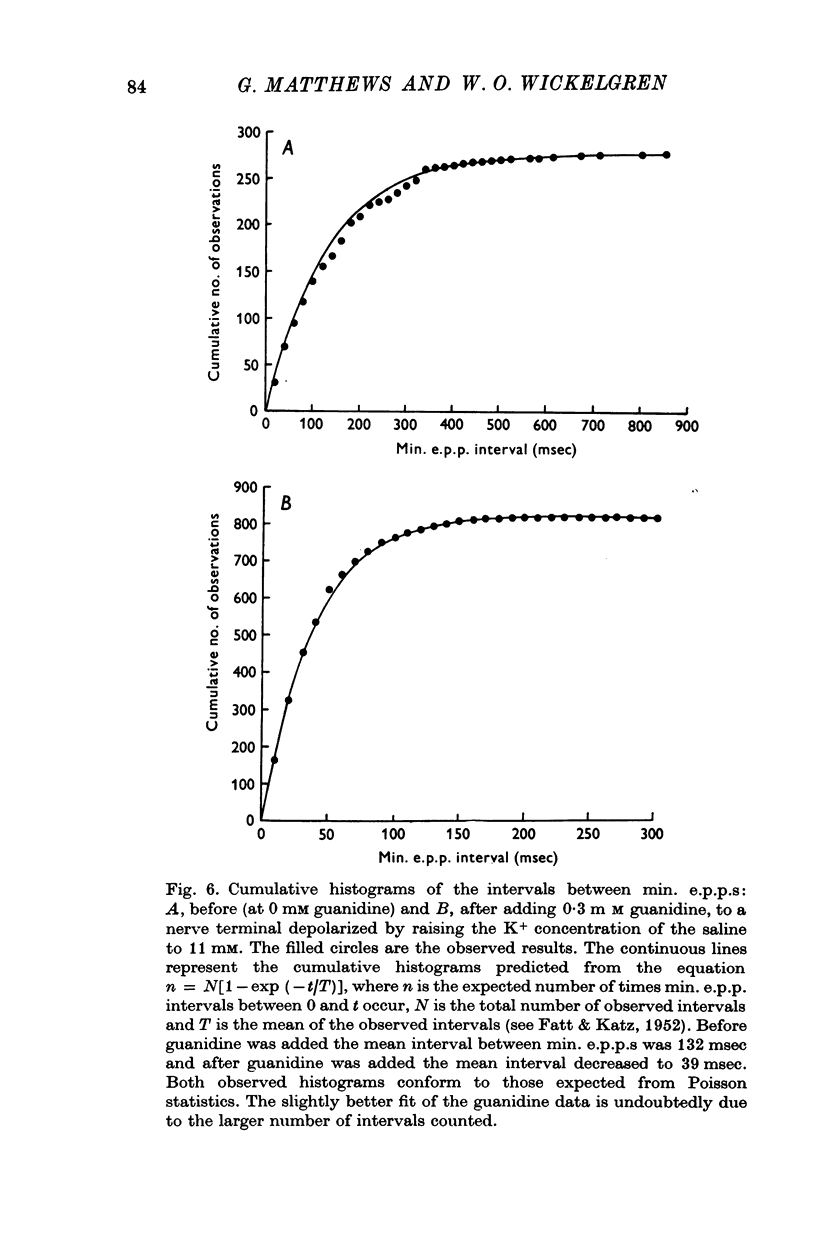
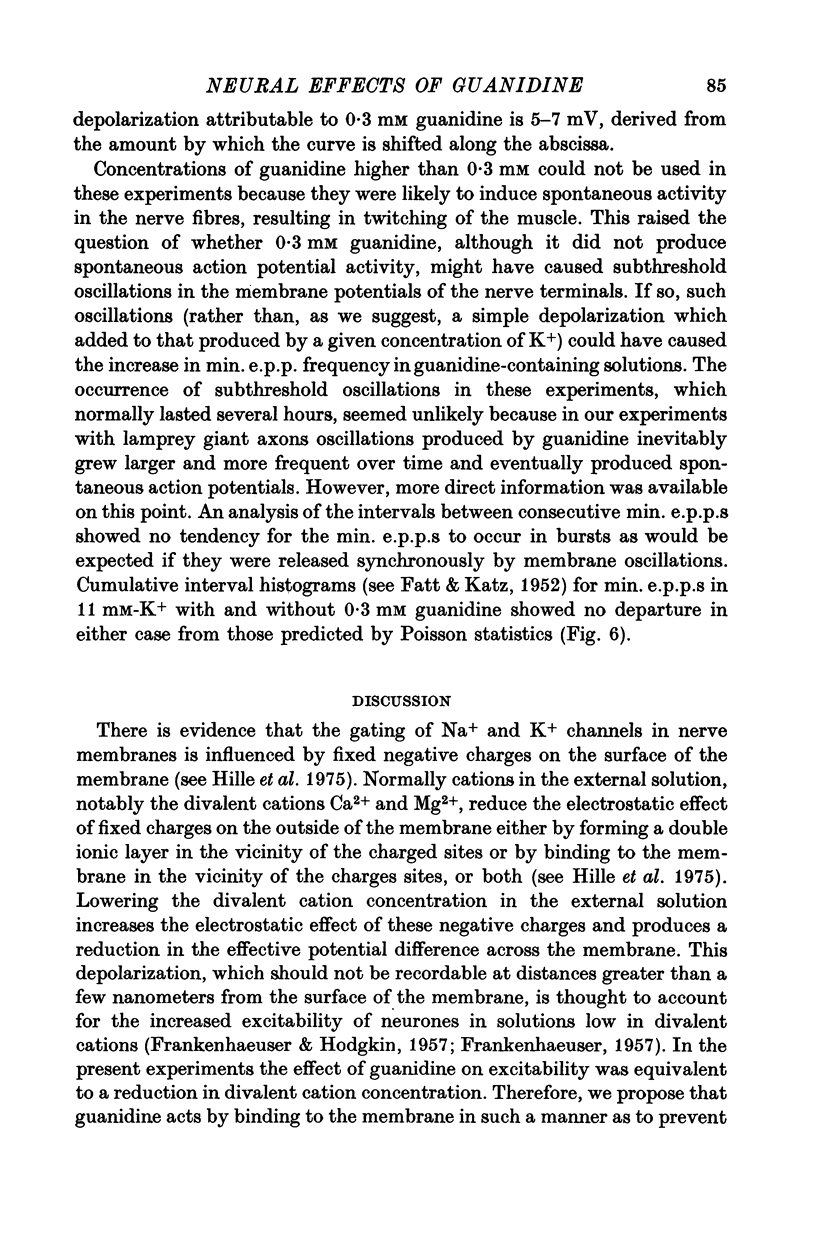
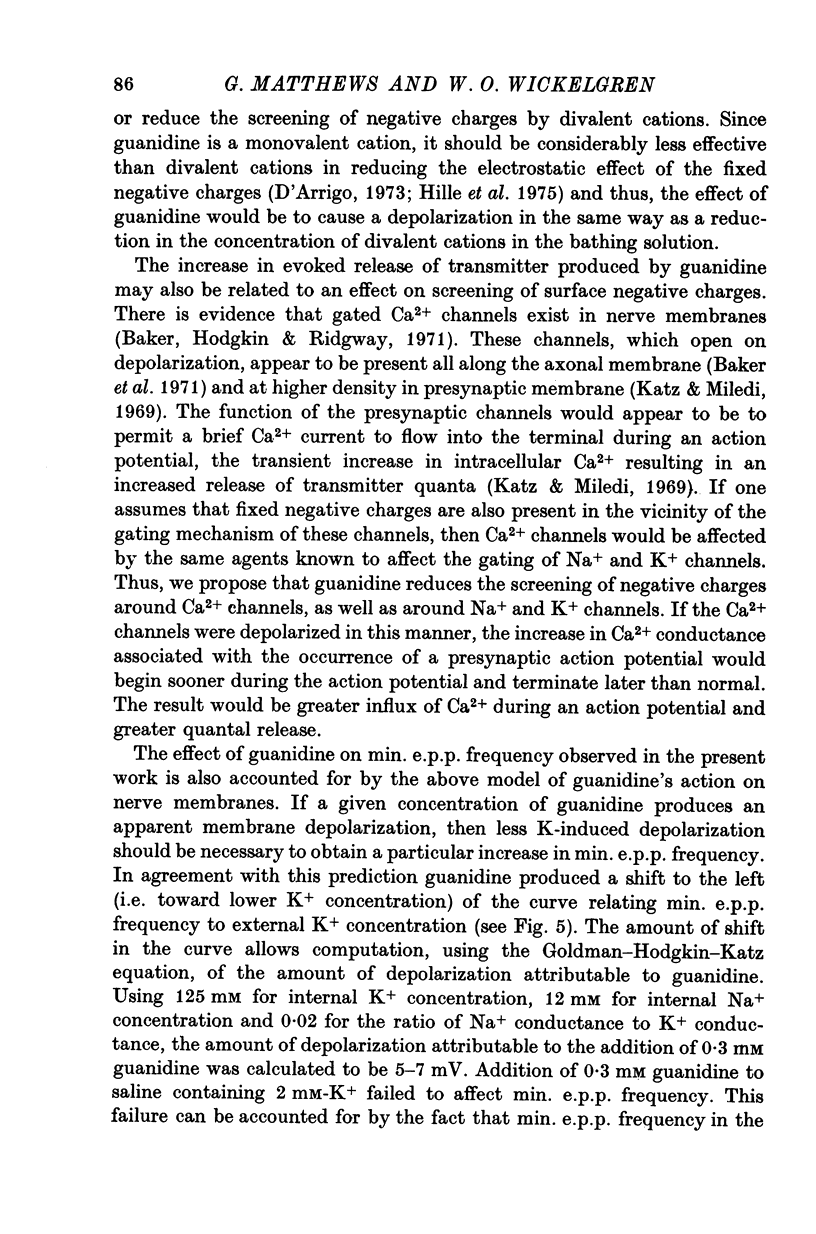

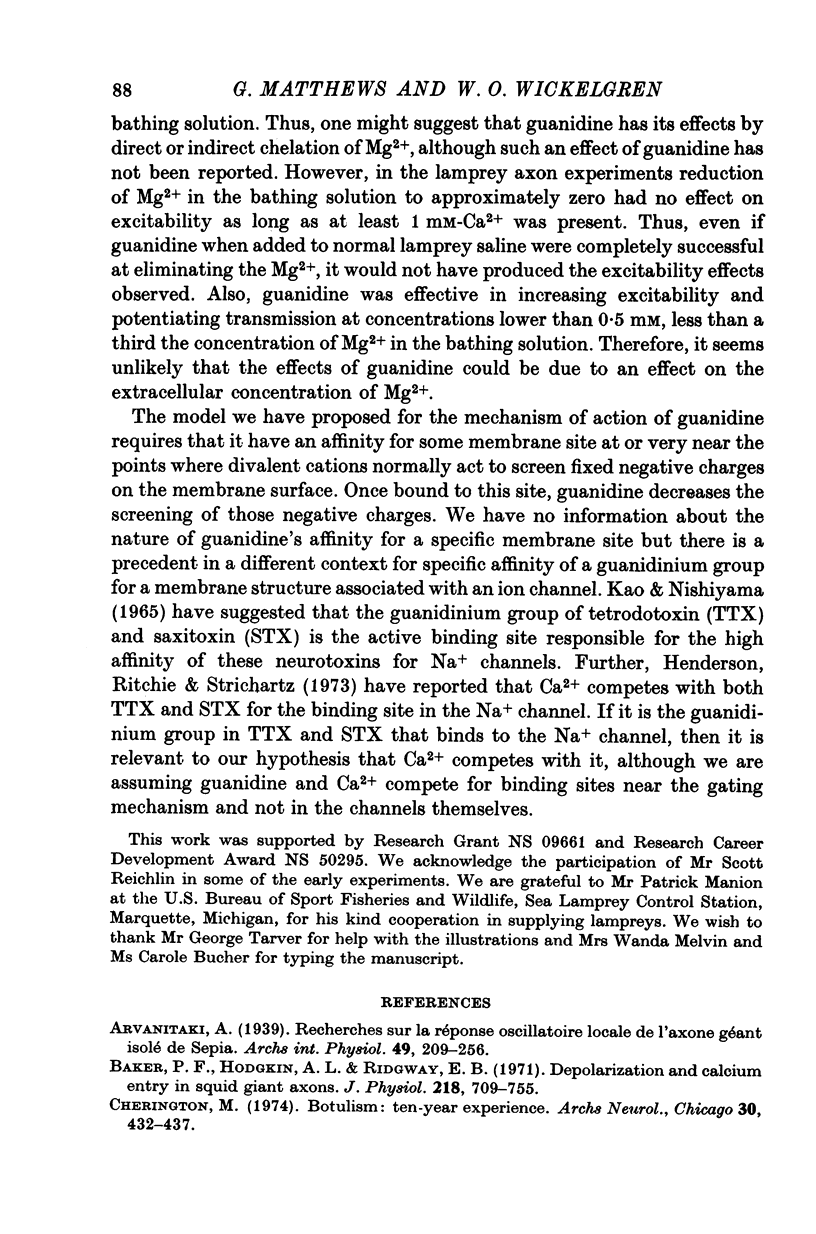

Selected References
These references are in PubMed. This may not be the complete list of references from this article.
- Baker P. F., Hodgkin A. L., Ridgway E. B. Depolarization and calcium entry in squid giant axons. J Physiol. 1971 Nov;218(3):709–755. doi: 10.1113/jphysiol.1971.sp009641. [DOI] [PMC free article] [PubMed] [Google Scholar]
- Cherington M. Botulism. Ten-year experience. Arch Neurol. 1974 Jun;30(6):432–437. doi: 10.1001/archneur.1974.00490360008003. [DOI] [PubMed] [Google Scholar]
- D'Arrigo J. S. Possible screening of surface charges on crayfish axons by polyvalent metal ions. J Physiol. 1973 May;231(1):117–128. doi: 10.1113/jphysiol.1973.sp010223. [DOI] [PMC free article] [PubMed] [Google Scholar]
- DEL CASTILLO J., KATZ B. Changes in end-plate activity produced by presynaptic polarization. J Physiol. 1954 Jun 28;124(3):586–604. doi: 10.1113/jphysiol.1954.sp005131. [DOI] [PMC free article] [PubMed] [Google Scholar]
- Elmqvist D., Lambert E. H. Detailed analysis of neuromuscular transmission in a patient with the myasthenic syndrome sometimes associated with bronchogenic carcinoma. Mayo Clin Proc. 1968 Oct;43(10):689–713. [PubMed] [Google Scholar]
- FATT P., KATZ B. Spontaneous subthreshold activity at motor nerve endings. J Physiol. 1952 May;117(1):109–128. [PMC free article] [PubMed] [Google Scholar]
- FRANKENHAEUSER B., HODGKIN A. L. The action of calcium on the electrical properties of squid axons. J Physiol. 1957 Jul 11;137(2):218–244. doi: 10.1113/jphysiol.1957.sp005808. [DOI] [PMC free article] [PubMed] [Google Scholar]
- FRANKENHAEUSER B. The effect of calcium on the myelinated nerve fibre. J Physiol. 1957 Jul 11;137(2):245–260. doi: 10.1113/jphysiol.1957.sp005809. [DOI] [PMC free article] [PubMed] [Google Scholar]
- Henderson R., Ritchie J. M., Strichartz G. R. The binding of labelled saxitoxin to the sodium channels in nerve membranes. J Physiol. 1973 Dec;235(3):783–804. doi: 10.1113/jphysiol.1973.sp010417. [DOI] [PMC free article] [PubMed] [Google Scholar]
- Hille B., Woodhull A. M., Shapiro B. I. Negative surface charge near sodium channels of nerve: divalent ions, monovalent ions, and pH. Philos Trans R Soc Lond B Biol Sci. 1975 Jun 10;270(908):301–318. doi: 10.1098/rstb.1975.0011. [DOI] [PubMed] [Google Scholar]
- Hofmann W. W., Parsons R. L., Feigen G. A. Effects of temperature and drugs on mammalian motor nerve terminals. Am J Physiol. 1966 Jul;211(1):135–140. doi: 10.1152/ajplegacy.1966.211.1.135. [DOI] [PubMed] [Google Scholar]
- Kao C. Y., Nishiyama A. Actions of saxitoxin on peripheral neuromuscular systems. J Physiol. 1965 Sep;180(1):50–66. [PMC free article] [PubMed] [Google Scholar]
- Katz B., Miledi R. Tetrodotoxin-resistant electric activity in presynaptic terminals. J Physiol. 1969 Aug;203(2):459–487. doi: 10.1113/jphysiol.1969.sp008875. [DOI] [PMC free article] [PubMed] [Google Scholar]
- Kusano K. Effect of guanidine on the squid giant synapse. J Neurobiol. 1970;1(4):459–469. doi: 10.1002/neu.480010408. [DOI] [PubMed] [Google Scholar]
- Lambert E. H., Elmqvist D. Quantal components of end-plate potentials in the myasthenic syndrome. Ann N Y Acad Sci. 1971 Sep 15;183:183–199. doi: 10.1111/j.1749-6632.1971.tb30750.x. [DOI] [PubMed] [Google Scholar]
- OTSUKA M., ENDO M. The effect of guanidine on neuromuscular transmission. J Pharmacol Exp Ther. 1960 Mar;128:273–282. [PubMed] [Google Scholar]
- Rovainen C. M. Physiological and anatomical studies on large neurons of central nervous system of the sea lamprey (Petromyzon marinus). I. Müller and Mauthner cells. J Neurophysiol. 1967 Sep;30(5):1000–1023. doi: 10.1152/jn.1967.30.5.1000. [DOI] [PubMed] [Google Scholar]
- TAKEUCHI A., TAKEUCHI N. Changes in potassium concentration around motor nerve terminals, produced by current flow, and their effects on neuromuscular transmission. J Physiol. 1961 Jan;155:46–58. doi: 10.1113/jphysiol.1961.sp006612. [DOI] [PMC free article] [PubMed] [Google Scholar]


